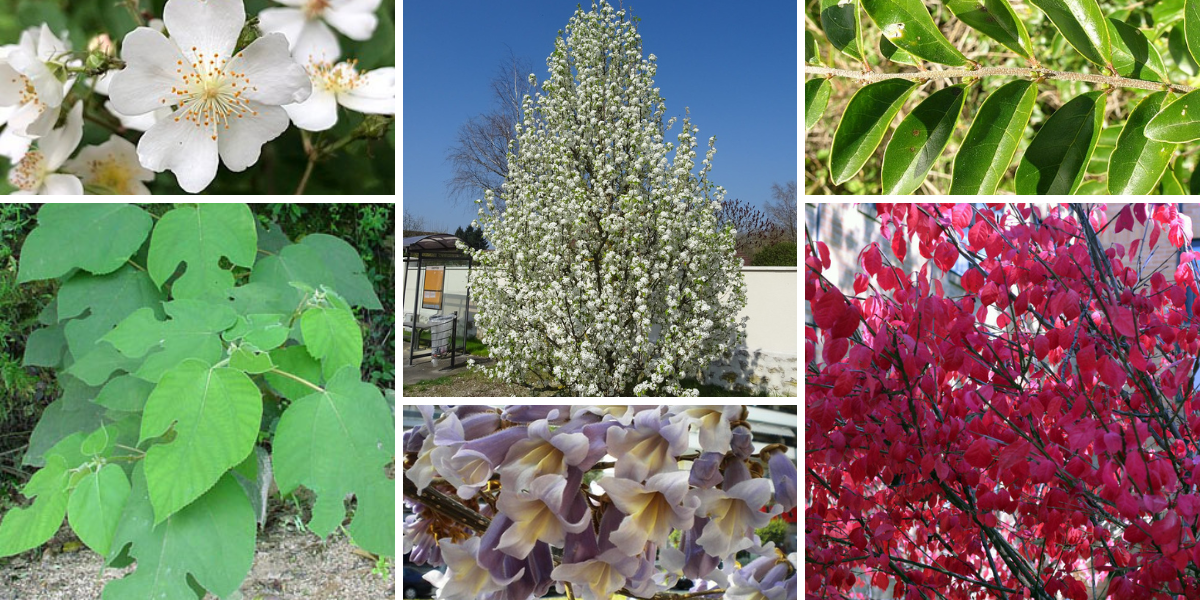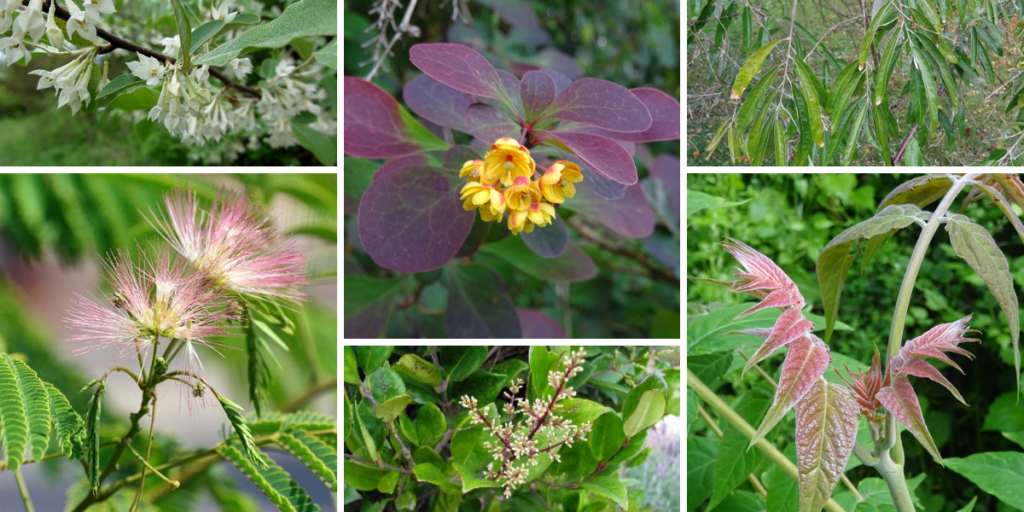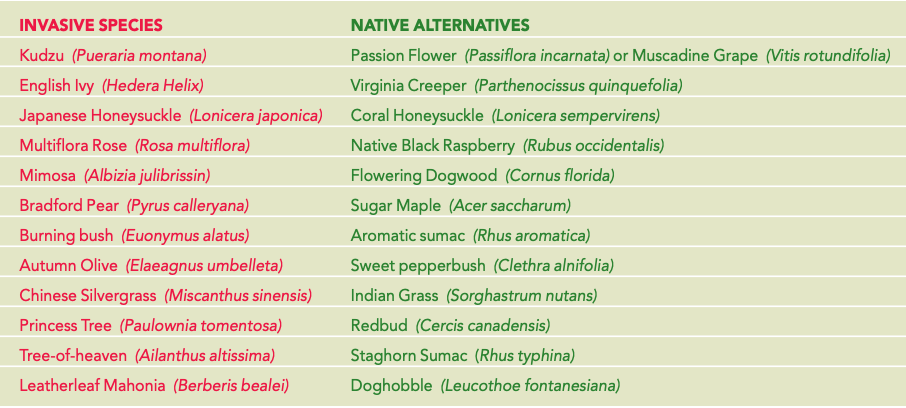Restoring the Balance of Nature: Battling Invasive Plant Species, Preserving Natives

While at first glance they seem attractive, the ugly truth is nonnative invasive plant species can wreak havoc on the balance of nature.
We’ve all witnessed the carnage of kudzu – the leafy vine that climbs, coils and trails over roadside forest while smothering any habitat in its path. But it’s not the only invasive culprit guilty of compromising the health and sustainability of our native flora and fauna and rapidly decreasing our pollinator species.
Not only do these species pose an increasing and significant threat to wildlife and habitat, but combatting them is a costly and burdensome responsibility for the Department of Transportation, utility companies, farmers and foresters.
Land managers must earmark vast resources and personnel time to eradicate or minimize invasive plants on roadsides, rights-of-way, agricultural fields and forest lands as birds and other wildlife spread the seeds of invasive species far and wide.
Adding to the vicious cycle of invasive plant spread are unaware consumers, gardeners, landscapers and builders who purchase and plant readily available invasive species.
What is an Invasive Plant Species?
The U.S. Department of Agriculture – Forest Service website defines “invasive species” as a species that’s “nonnative (or alien) to the ecosystem under consideration” and whose “introduction causes or is likely to cause economic or environmental harm or harm to human health.”
Invasive plants are successful in their destruction because they can produce large quantities of seed, thrive on disturbed soil, and have aggressive root systems that spread long distances from a single plant. They also can grow so densely that they smother the root systems of the surrounding vegetation.
Some produce chemicals in their leaves or root systems that can inhibit the growth of plants around them. Additionally, birds, wind and humans unknowingly distribute invasive plant seeds, allowing them to travel great distances.
Impacts of Invasive Plant Species
The USDA Forest Service reports invasive species have contributed to the decline of 42 percent of the country’s endangered and threatened species. The North Carolina Native Plant Society has identified over 100 invasive plant species currently threatening native plants and is monitoring dozens more as potential invaders.
Invasive species compete directly with native species for moisture, sunlight, nutrients and space and increase soil erosion. Additionally, they can decrease and degrade wildlife habitat, plant diversity, agricultural lands, water quality and recreational opportunities. These impacts change nature’s balance on which all species depend.

While many invasive plant species threaten and degrade native habitats, here are six offenders North Carolinians should avoid purchasing and planting. Clockwise from top left: Autumn Olive, Japanese Barberry, Russian Olive, Tree of Heaven, Japanese Privet and Mimosa.
The Dirty Dozen: Invasive Woody Plants in North Carolina
While many invasive plant species across the state threaten and degrade native habitats, here are 12 offenders North Carolinians should avoid purchasing and planting.
- Tree of Heaven (Ailanthus altissima)
- Mimosa (Albizia julibrissin)
- Japanese Barberry (Berberis thunbergii)
- Paper Mulberry (Broussonetria papyrifera)
- Russian Olive (Elaeagnus angustifolia)
- Autumn Olive (Elaeagnus umbellata)
- Burning Bush (Eunonymus alatus)
- Japanese Privet (Ligustrum japonica)
- Chinese Privet (Ligustrum sinense)
- Princess Tree (Paulownia tomentosa)
- Bradford Pear (Pyrus calleryana) Read: New Program Gives the Boot to Bradford Pears, Replaces Them with Native Trees
- Multiflora Rose (Rosa multiflora)
Browse NCWF’s Restoring Habitat work for alternative native options that benefit wildlife and pollinators.
10 Ways to Fight Invasive Plant Species and Preserve Natives
Here are some things you can do to fight invasive plants and preserve the plant species native to North Carolina:
- Don’t pick the flowers of noxious weeds and take them home.
- Drive only on established roads and trails away from weed-infested areas.
- Don’t pick and transport wildflowers you can’t identify.
- Don’t camp or drive in weed-infested areas.
- Properly remove and dispose of invasive plant species on your property.
- Replace invasive plants with natives.
- Learn to identify invasive plants and report them to the NC-IPC Board of Directors or N.C. Department of Agriculture and Consumer Services at 1-800-206-WEED or [email protected].
- Check our Events page and join NCWF and a Community Wildlife Chapter near you for a planting event.
- Purchase a packet of our native pollinator seed mix, which provides several native flowering plants, including milkweed, black-eyed Susan and coneflower.
- Order a Butterfly Highway sign to show your commitment to protecting pollinators and providing a haven for butterflies, bees and more.
Best Time of Year to Plant Native Seeds
The best time to plant perennial seeds is from September to February. If you purchase seeds outside of that time frame, it’s essential to know that many native seeds require a period of cold temperature exposure to germinate.
Choose a planting location with full sun that’s approximately 25 square feet. Clear the area of all existing growth. Scatter the seeds directly onto the soil surface and lightly pat the seeds into the soil without burying them. Do not mulch or cover with straw.
Once the seeds begin to grow, water the area regularly to keep the soil moist (but not soaking wet) until the seedlings grow about 4-6 inches tall. Once established, native perennials will survive well with only natural rainfall. You may occasionally water if exceptionally dry.
Be patient and watch them grow. Depending on when planted, some varieties may take up to 1 year to fully germinate and flower. You may consider planting plugs and individual flowers within your garden to supplement and speed up the process.
Invasive Tree Pests: Identification and Management
Join NCWF’s Union County Wildlife Chapter in learning about invasive tree pests impacting North Carolina forests, including spotted lantern fly, emerald ash borer and sudden oak death. Speaker Brian Heath is a Forest Health Specialist for the NC Forest Service who began working with the agency in 1994.
Invasive Plants of North Carolina
Learn more about some of the most prevalent invasive plant species in North Carolina and some tips on mitigating and removing them from habitats.

